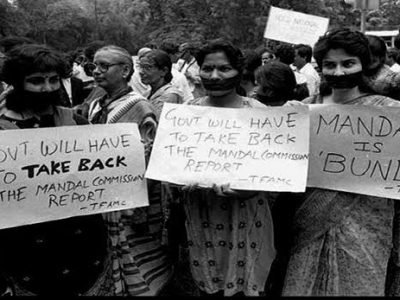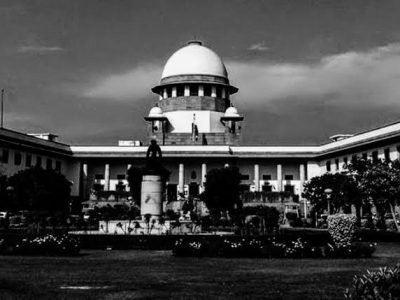
Author: Anushree Sudan, 1st year student at National Law University, Delhi.
Introduction
The Constitution of India is not merely a legal document, it encompasses the social and political realities and aspirations of the country too.[1] The issue of Centre-State relations has been a bone of contention among various political thinkers for as long as the idea of ‘India’ has existed. From demanding provincial autonomy from the British in 1919[2], to the 1972 Jai Andhra Movement[3] and to the contemporary revocation of Article 370 from the state of Jammu and Kashmir[4], relationship between the Centre and the States has been an ever evolving element of democracy. With a vast diversity of cultures in the country, this identity can be a language which needs representation, a religion, a caste, a tribe or even a geographical culture. Therefore, retaining one’s cultural identity and having a unified state at the same time becomes a precarious and complicated matter to resolve in India’s social realm. The Constituent Assembly of India therefore saw representation from various schools of thought[5] and tried to make a clear distinction of powers through the Lists and India was established as a federation with a strong centre.
Article 356[6] gives emergency powers to the Centre, in case of failure of the ‘constitutional machinery’ in a state. This imposes ‘President’s rule’ in the respective state. Since the 1959 dissolution of E.M.S. Namboodiripad’s Communist Legislative Assembly in Kerala[7], the States expressed resentment and dissatisfaction towards this constitutional provision. Studying the political trend of India, the misuse of these emergency powers by the ruling party at the centre invoked frustration among the States over the representation of their regional identity and ideology. To put in the layperson’s words, the misuse of this constitutional provision gave the Centre unwritten power to bully the States. These concerns were even pointed out in the Sarkaria Commission report[8] and the Rajamannar Committee report.[9]
SR Bommai & Ors. v. The Union of India is a landmark judgement in the history of Indian administrative law. Decided by a 9-judge bench, the case took over 4 years to pass a verdict. The bench went on to discuss the constitutional validity of the President’s rule and status of Governor in the States. The basic structure of the Constitution established India as a Sovereign, Socialist, Secular, Democratic Republic[10]. This definition implicitly ascertains the federal nature of the Indian Republic. This case is specifically significant in interpreting these constitutional ideals of federalism and secularism as inevitable features of the State which cannot be compromised through technicalities and therefore goes on to highlight the importance of the judiciary and its reviewing powers in curtailing malafide exercise of Article 356.
Details of The Case
Case number: Civil Appeal No. 3645 of 1989
Citation: MANU/SC/0444/1994
Petitioner(s): S.R. Bommai and Ors.
Respondent(s):Union of India (UOI) and Ors.
Counsels: Altaf Ahmed, Additional Solicitor General, Milon K. Banerjee, P.L. Dubey, Attorney General, Ram Jethmalani and Arun Jaitley, Advs
Bench: S.R. Pandian, A.M. Ahmadi, Kuldip Singh, J.S. Verma, P.B. Sawant, K. Ramaswamy, S.C. Agrawal, Yogeshwar Dayal and B.P. Jeevan Reddy, JJ.
Date Of Judgement:11 March, 1994
Concerned statutes and provisions: Articles 74(2), 163, 355, 356, 357 and the other allied constitutional provisions.
Facts Of The Case
The circumstances which led to the petition by S.R.Bommai was the imposition of President’s rule in Karnataka. These actions of the Centre were often regarded as misuse of power since it’s imposition did not require immediate Parliamentary approval.While interpreting the powers of the President[11], one observes that every decision made by the President requires assent and guidance of the Council of Ministers and the Prime Minister at the Centre. This gives the Centre an arbitrary control of the State with the supposed ‘President’s Rule’. This provision has often been used as a political tool by the party in power, dissolution of a Communist Legislative Assembly in Kerala by the Congress being an example.[12]
S.R. Bommai was elected as Karnataka’s Chief Minister in 1989 and formed the Janata Dal Legislative Assembly. Due to several defections, he lost his majority. Later it was revealed that the seven out of the 19 ministers who wrote to the Governor about withdrawal of support were actually misrepresented. But by then the President was already given charge of practicing his powers under Art. 356(1)[13] as the Governor’s report had already been received before the message of misrepresentation was received by the President. It was reiterated by the Governor that Bommai had lost the vote of confidence and the Parliament approved its Proclamation[14]. A writ petition was filed in the Karnataka High Court but was rejected. Similar state of affairs were addressed in states of Meghalaya, Rajasthan, Madhya Pradesh, Himachal Pradesh and Nagaland. All these instances involved the Centre’s use of arbitrary powers over the States, the Ayodhya demolition[15] being one of them.
Issues Raised
- The President’s Rule negated the federal character of the Indian political system, where administration usually is shared between the Union and State governments. It also went against the democratic doctrine of popular sovereignty, since an elected government was suspended.[16] Thus whether the invocation of President’s Rule in 6 states was constitutionally valid?
- If the Rule is invoked, does the President of India enjoy absolute freedom over the proclamation of Article 356(1) of the Indian Constitution? If not, then to what extent can the judiciary intervene through its reviewing powers?
- How can “a situation has arisen in which the government of the state cannot be carried on under the provisions of this constitution” be defined in absolute and relative terms in accordance with Article 356 (1)?
DECISION OF THE BENCH
With a consensus of 5:4, the Supreme Court held that the imposition of President’s Rule in Nagaland (1988), Karnataka (1989) and Meghalava (1991) was unconstitutional. The Court further declared the dismissal of state governments of Madhya Pradesh, Rajasthan and Himachal Pradesh in December 1992 – because their activities were inconsistent with the secular character of the Constitution of India.[17]
- The SC laid down that the President has been given great power by virtue of Article 356 but this power must be exercised with great care and caution. The Commission suggested that before invoking Article 356 (1) notices on certain conditions, it must be given to the State. Every option should be drained to contain the situation and all attempts to solve the problem of State standard must be addressed.
- Article 356 does not address the legislature being dissolved expressly but impliedly through Article 356 (1) (a). It allows the President to adjourn the Legislative Assembly.
- The Court ruled that the validity of Proclamation issued by the President imposing President’s Rule is judicially reviewable.[18]
- After Mayawati Government’s withdrawal, the B.J.P. and Samajwadi Party were not required to form the government. It was prescribed by the Governor that there should be Presidential administration in the State.
CRITICAL ANALYSIS OF THE JUDGEMENT
The S.R. Bommai judgement is considered a landmark judgement in ascertaining and strengthening the federal character of the Indian state. The case has often been compared to Baker v. Carr[19], another case which shaped the American legal, political and social system. Moreover, it was a judgment with notable symbolic and practical importance for the configuration of federalism.[20] Both cases are considered significant since they proceeded during a period when standing of the Centre was being questioned with reason of fundamental bases of equality, uniform interpretation of constitutional provisions at regional levels and an unambiguous paramountcy of federalism and a moral authority were being conveyed.[21] The judgement has also played a pivotal role in determining the supervising role of the judiciary in establishing a federal state.
The Bommai judgement has been called the most important judicial verdict by the apex court after the Kesavananda Bharati Case[22] in terms of the activist role of the judiciary.[23] As said before, the Indian constitution acts as a social document[24] which encompasses various social and constitutional aspirations of the masses. With the power of supervision and review, the judiciary acts as a messiah for the disadvantaged. By aiding the dynamic nature of society and politics with the authority to question concentration of power, the judiciary enables the practical implementation of principles of democracy. This judgement is therefore significant in curtailing the power of political bullies from exploiting technicalities of the constitution. The ‘basic principle jurisprudence’[25] applied by the bench acknowledges the ‘spirit of the constitution’ over the technicalities which are often exploited in interpretation by the powerful. The judgement did not only take away the arbitrary power of the Centre, but also made authorities aware of judicial intervention in policy making and day to day governance and is thus considered landmark in making the Indian Supreme Court the world’s most activist judiciary.
The Bommai proceedings happened in the early 1990s. The political atmosphere of the country has changed ever since. There has been a rise in coalition politics[26] and therefore representation of State parties has increased. But this does not necessarily assure that their say is satisfactory. These coalitions often become ideologically chaotic and therefore the bigger National parties’ ideologies inaccurately represent these State aspirations. Further, the power of the Centre’s bullying privileges still needs reform. Various accusations of the Centre ‘toppling state governments’ and ‘sale purchase of MLAs’ have been made in many states.[27] Considering that a single party currently holds over 55 percent seats in the Lok Sabha[28], holds an absolute majority in 4 states,[29] has allies in 14 state governments and the President’s Rules presides over 8 Union territories[30], the judiciary should acknowledge the concentration of power in this political reality and propose reformations accordingly.
References
[1] S.R. Bommai & Ors. v. Union of India & Ors., MANU/SC/0444/1994.
[2] Government of India Act, 1935.
[3]Rama Sundari Mantena, The Andhra Movement, Hyderabad State, and the Historical Origins of the Telangana Demand: Public Life and Political Aspirations in India, 1900–56, Vol. 13, INDIA REVIEW, 337(2014).
[4] INDIAN CONST. art 370.
[5] Thursday, the 21st August, 1947, Vol. 5, CONSTITUENT ASSEMBLY OF INDIA DEBATES (PROCEEDINGS)(1950).
[6] INDIAN CONST. art 356.
[7] Asha Rajan, Role of “Article 356‟ in History of Kerala Politics – A Reappraisal, Vol. 1, INTERNATIONAL JOURNAL OF LATEST RESEARCH IN HUMANITIES AND SOCIAL SCIENCE, 12, 14(2017).
[8] http://interstatecouncil.nic.in/report-of-the-sarkaria-commission/
[9]https://fincomindia.nic.in/writereaddata/html_en_files/oldcommission_html/fcreport/Report_of_The_Finance_Commission_1965/minute%20by%20dr%20p%20v%20rajamannar%20.pdf
[10] INDIAN CONST., Preamble ( Sovereign, Socialist, Secular, Democratic Republic).
[11] INDIAN CONST. Art 74,75.
[12] supra: note 7.
[13] INDIAN CONST. Art 356 Ss. 1.
[14] supra: note 1.
[15]Babri Masjid: The Timeline of a Demolition, THE WIRE(Date Accessed |Jun 2, 2021, 10:30PM|) https://thewire.in/communalism/babri-masjid-the-timeline-of-a-demolition.
[16] supra: note 7.
[17] supra: note 1.
[18] Ramu Bagri, Development Of Indian Federalism & Role Of President’s Rule In The Light Of The S.R Bommai Case (1994), Vol. 73, THE INDIAN JOURNAL OF POLITICAL SCIENCE, 443, 450(2012).
[19] Baker v. Carr 369 U.S. 186, 300 (1962).
[20] Gary Jeffrey Jacobsohn, Bommai and the Judicial Power: A View from the United States, 2 INDIAN J. Const. L. 38 (2008).
[21] Id.
[22] Kesavananda Bharati Sripadagalvaru and Ors v. State of Kerala and Anr, AIR 1973 SC 1461.
[23] S.P. Sathe, Judicial Activism in India: Transgressing Borders and Enforcing Limits, (New Delhi: Oxford University Press, 2002), 152.
[24] supra: note 1.
[25] supra: note 22.
[26] Dalal, Rajbir Singh. Recent Trends In Indian Politics: An Introspection,vol. 73, THE INDIAN JOURNAL OF POLITICAL SCIENCE, 375 (2012).
[27] Express News Service, Ashamed of BJP getting involved in ‘sale-purchase’ of MLAs: Shanta, THE INDIAN EXPRESS (Date Accessed|2 Jun, 2021, 10:21 PM|). https://indianexpress.com/article/india/ashamed-of-bjp-7206584/.
[28] Maps of Ruling Political Parties in States of India, MAPS OF INDIA (Date Accessed|Jun 3, 2021, 6:36 AM|) https://www.mapsofindia.com/maps/india/states-political-parties.html.
[29] Id.
[30] Id.







